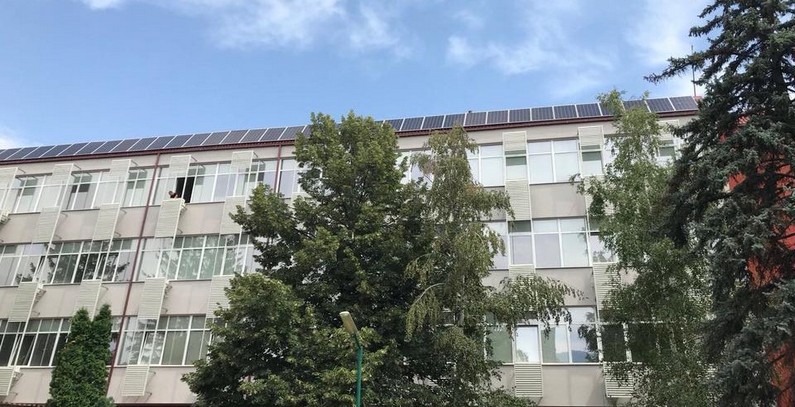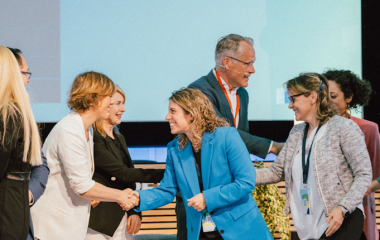
Photo: Facebook/FEIT
The Ss. Cyril and Methodius University of Skopje’s Faculty of Electrical Engineering and Information Technologies (FEIT) is the first university school in Macedonia to have launched electricity production for self-consumption using rooftop photovoltaic (PV) systems, according to a statement from the FEIT.
Though small, the EUR 27,500 investment in the two rooftop PV systems sends a positive signal to other university schools and state institutions, given that it will cut the FEIT’s annual electricity bills by between EUR 3,000 and EUR 3,500, thereby reducing the burden on the state budget, but also help fight air pollution in what is one of Europe’s most polluted cities.
One of the PV systems, with a capacity of 10 KW, was donated by Macedonia’s largest fuel retailer OKTA, part of Greece’s Hellenic Petroleum, as of recently also active in the production of electricity from renewable energy sources.
The other PV system, which has a capacity of 12 KW and an energy storage system, was procured as part of the EU’s Instrument for Pre-Accession Assistance (IPA) project Enhancing Storage Integration in Buildings with Photovoltaics – PV ESTIA and from the FEIT’s own sources, said FEIT Dean Dimitar Taškovski.
The FEIT’s project should serve as an example to other educational institutions to exploit the potentials of renewable energy sources, said Macedonian Minister of Education and Science Arber Ademi, noting that the PV systems will also enable the FEIT’s students to gain hands-on experience and practical knowledge of how these energy facilities work.
Households invited to take part in pilot project
Earlier, the FEIT invited households to express interest by September 1 in participating in a pilot project within the framework of PV ESTIA, during which the consumption of electricity will be measured at 20 households.
By the end of September 2018, a measuring device will be installed in each of the selected households to measure the consumption of electricity for three years. During this period, the households will have an opportunity to monitor their consumption on a wireless home monitor in real time or through an app (on a computer, tablet, or smartphone).
The measured data acquired in this way will be owned by the project and will be used to form a clear representation of the habits of household electricity consumption by analyzing the corresponding consumer diagram, the FEIT said.


















Be the first one to comment on this article.